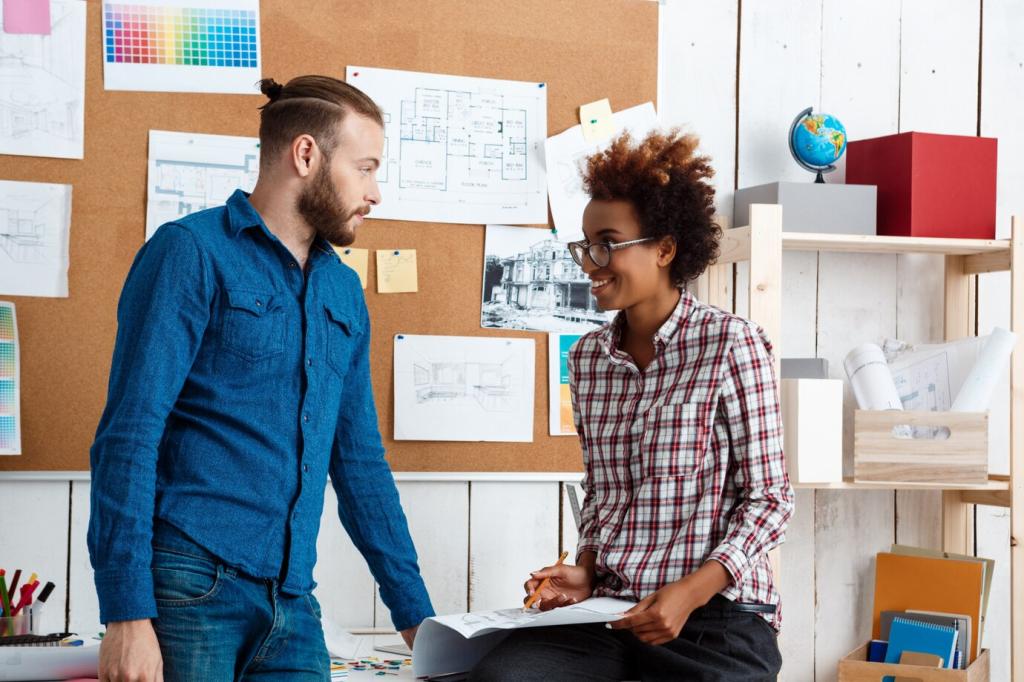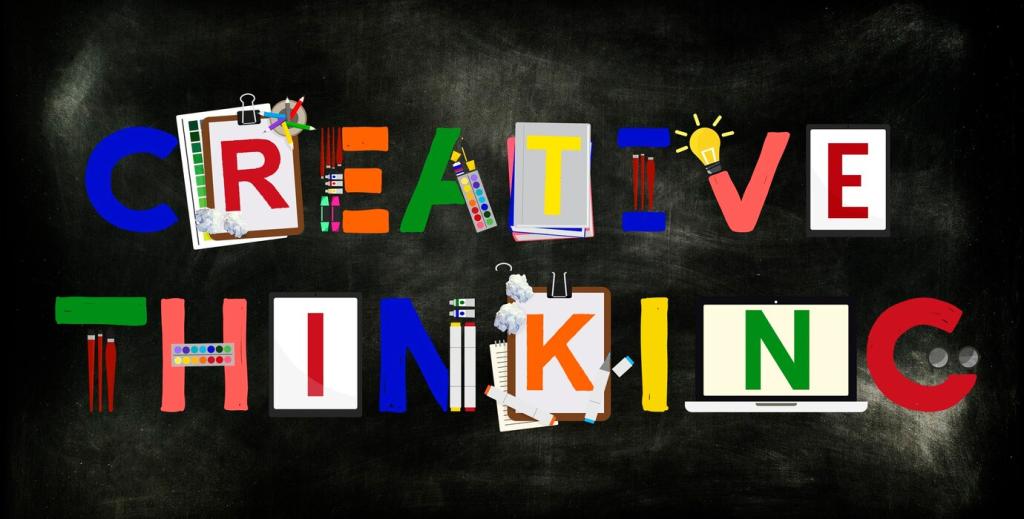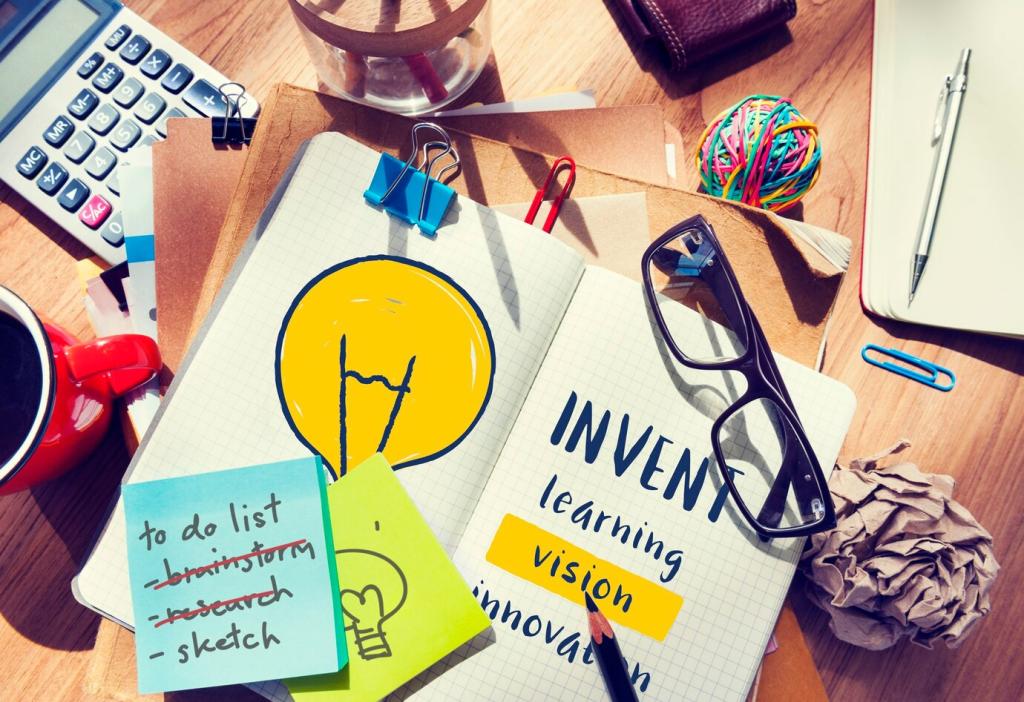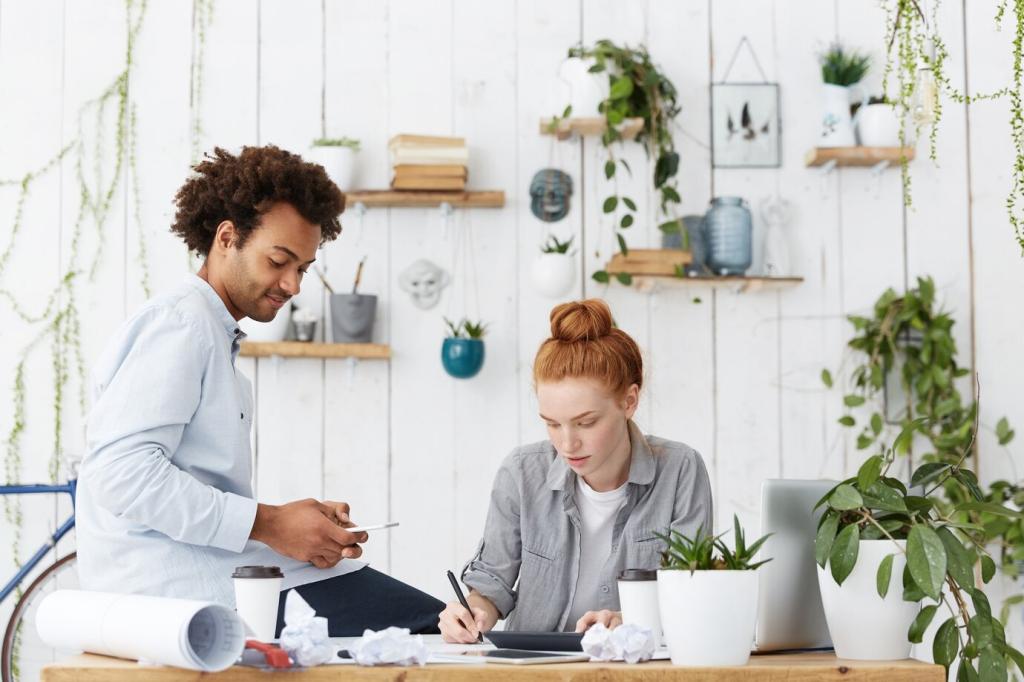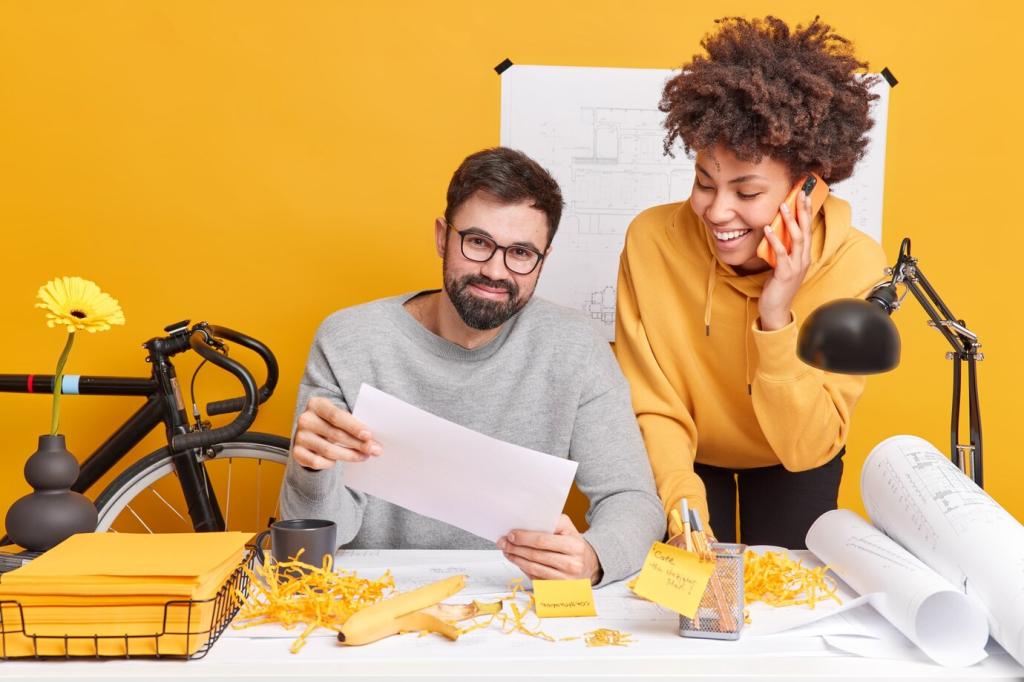Designing Workshops That Spark Connection
Start with five-minute prompts that lower pressure and raise laughter: blind contour portraits with thick markers, one-tool drawings, or a playful swap where each person embellishes a neighbor’s cardboard shape. These exercises loosen wrists, dissolve jitters, and make the first real collaboration feel natural.
Designing Workshops That Spark Connection
Assign rotating roles—maker, documentarian, and observer—so everyone contributes from different perspectives. Add gentle constraints like a limited color palette or a maximum size. Boundaries sharpen focus and invite resourcefulness, encouraging teams to co-create rather than compete for the loudest idea.
Designing Workshops That Spark Connection
Use safe, structured language: “I notice…” and “I wonder…” keep critique curious and kind. Try silent gallery walks where teams leave sticky notes, then regroup for patterns and next steps. Share your favorite feedback ritual in the comments so others can borrow it for their next session.
Designing Workshops That Spark Connection
Lorem ipsum dolor sit amet, consectetur adipiscing elit. Ut elit tellus, luctus nec ullamcorper mattis, pulvinar dapibus leo.


